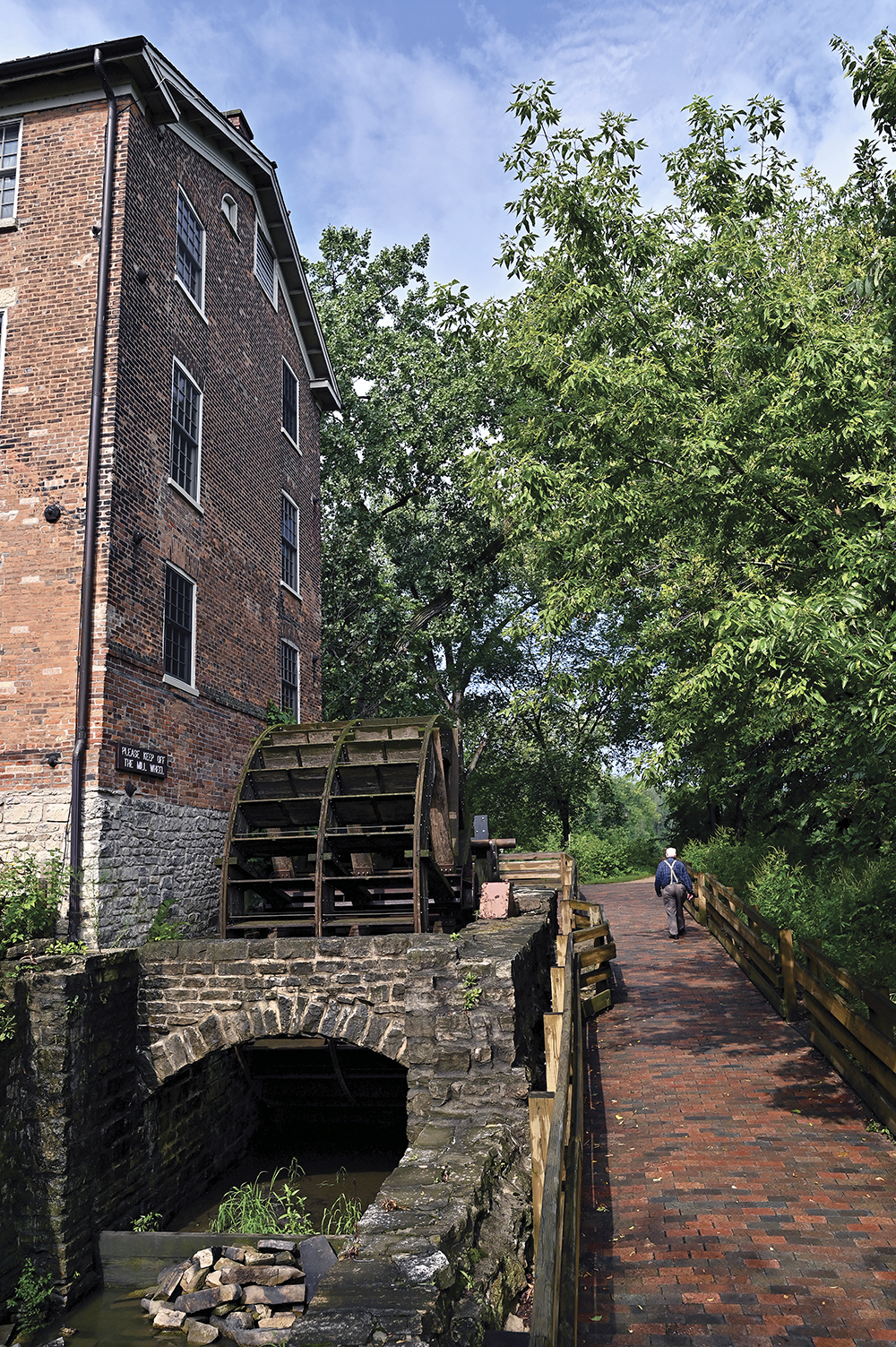
By the Hinsdale Magazine Group Staff
Photos by Victor Hilitski
The year was 1933, and the country was still in the throes of the Depression, and for many Americans, a way to enjoy a Saturday or a Sunday meant something as simple as a walk in the woods. There just wasn’t enough cash to be doing expensive things.
Mr. and Mrs. Frank O. Butler (parents of Oak Brook founder Paul Butler) realized how many folks who lived in the Hinsdale area and surrounding farms enjoyed walking in the woods and around the old Graue Mill and Dam. It was a wonderful way to spend time with the family in all seasons. The mill pond, formed upstream of the dam, provided year-round entertainment.
It was a perfect place for canoeing and boating in the summer months and a perfect place for ice skating in the winter. It was also when local ice harvesters cut their big blocks of ice and hauled them out on sledges pulled by draft horses to be stored in local ice houses, well-insulated by a thick layer of sawdust.
It was in that atmosphere that Frank and Fannie Butler realized how important both the dam and the mill were to local history and to local recreation too.
They decided to transfer ownership of over 85 acres of forested land on both banks of Salt Creek from east of York Road, following the meander of the Creek all the way to Adams Road to the DuPage County Forest Preserve District.
It was their often-expressed wish that this incredible place – full of history and such an amazing habitat – would be available in the future for the people of DuPage County.
The dam that is adjacent to Graue Mill was built originally in the 1850s – first to service a sawmill and then to serve a grist mill. Frederick Graue and his grist mill were used by farmers in the area who brought their corn and wheat so it could be ground into cornmeal and flour. Salt Creek is basically a stormwater drainage way, only about 43 miles long, from where it rises in Palatine, Illinois, to where it empties into the Des Plaines River at Riverside.
In order for there to be enough water to actually power a mill wheel, a mill pond had to be created, with water directed through a mill race. The wheel that the water turned weighs some 8,000 pounds.
In 1981, both the Graue Mill and the dam were officially listed on the U.S. National Register of Historic Places as an Illinois Historic Mechanical Engineering Landmark. This recognized that there would not be a mill without the dam and the mill pond behind it.
The history of the area is enhanced by the countless animals who make their home in the surrounding habitat – deer, fox, coyote, mink, beaver, raccoons; lots of turtles and frogs and an astonishing array of birds, including an often-seen bald eagle.
The DuPage County Forest Preserve District has licensed local chapters of the Conservation Foundation and the Sierra Club to remove the dam.
Despite concentrated efforts expended by many who believe in preserving the history of the area, including over 16,000 signatures on a petition to save the dam, the U.S. Army Corps of Engineers Chicago Office and the Illinois State Historic Preservation Office have signed off on their request.
Autumn of 2023 will be the last time you will be able to hear the water pouring over the dam. ■

The giant wheel was turned by water flowing over the dam. In turn, the wheel turned buhrstones which crushed corn and wheat into cornmeal and wheat flour.














I feel this article only covered half the story. Why did this article not focus on the benefits of removing the dam? Removing the dam will: increase water quality of the river, allow canoeing and kayaking over a longer distance, increase the scorecards of local sewer treatment plants (saving money on costly upgrades that the public would have had to pay for), and support a better habitat for aquatic plants/animals.